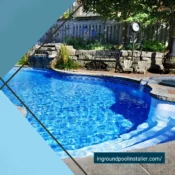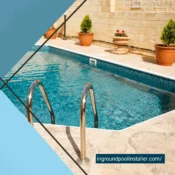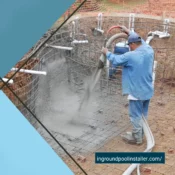Top Factors to Consider During Inground Pool Excavation

Top Factors to Consider During Inground Pool Excavation
Installing an inground pool is an exciting project that can add value to your home and transform your backyard into a personal oasis. However, one of the most critical and often overlooked phases of pool installation is excavation. Proper excavation ensures the pool’s longevity, structural integrity, and overall appearance. Overlooking key factors during this stage can lead to costly delays and potential structural issues. Here are the top factors every homeowner should consider to ensure a smooth and successful inground pool excavation.
1. Site Selection and Preparation
Choosing the right location for your pool is essential for long-term satisfaction and functionality. Consider factors such as sunlight exposure, drainage, and proximity to the house. Avoid placing the pool near large trees, as their roots can interfere with excavation and later damage the pool’s foundation.
Tip: Opt for a flat or gently sloped area to minimize the need for excessive grading and leveling.
2. Soil Condition and Composition
The type of soil on your property plays a significant role in the excavation process. Sandy or loose soil may require additional support, while rocky or clay-heavy soil can be more challenging to dig and may need specialized equipment. Conducting a soil test before excavation helps identify potential issues early on.
Example: If the soil is too loose, you may need to reinforce the pool walls with additional concrete or support structures.
3. Utility Line Mapping
Before breaking ground, it’s crucial to locate and mark all underground utility lines. Accidentally damaging water, gas, or electrical lines can not only delay the project but also pose serious safety hazards. Call 811 or a local utility marking service to identify the locations of these lines.
Pro Tip: Use ground marking paint to outline utility lines and the pool’s perimeter for clear guidance during excavation.
4. Proper Drainage Planning
Ensuring proper drainage around the pool site is vital for preventing water accumulation and soil erosion. Poor drainage can lead to pool shifting, cracking, or flooding. Installing a drainage system or adding gravel at the base of the pool can help manage excess water.
Solution: French drains or sump pumps are commonly used solutions to keep water away from the pool’s structure.
5. Excavation Accuracy and Depth
Excavating to the correct depth is critical for achieving the desired pool shape and size. Over-excavating can lead to additional backfilling, while under-excavating can prevent the pool from fitting properly. Use laser levels and measuring tools to ensure precision.
Tip: Hire experienced professionals who specialize in pool excavation to guarantee accurate and efficient digging.
6. Weather and Seasonal Considerations
The timing of excavation can impact the project’s overall success. Avoid scheduling excavation during rainy or extreme weather conditions, as this can lead to soil instability or water filling the dig site. The best time for excavation is during dry, stable weather.
Example: Plan pool installation in late spring or early summer to avoid heavy rainfall that may delay the process.
Excavating for an inground pool is a critical step that requires careful planning and attention to detail. By considering factors such as site selection, soil conditions, drainage, and utility mapping, homeowners can ensure a smooth and successful excavation process. Investing time and effort into this phase lays the foundation for a beautiful, long-lasting pool. Ready to start your pool project? Work with trusted professionals to bring your vision to life and enjoy the benefits of a perfectly installed inground pool.
All Categories
- Concrete
- Concrete
- Concrete pools
- Construction
- Custom Features and Add-ons
- Design
- Design
- Design
- Design & Construction
- Design and Planning
- Features & Customization
- Infinity edge
- inground pool
- inground pool builder
- inground pool installer
- Installation
- Installation Process
- Legal & Administrative
- Materials
- planning and design
- Pool Aesthetics and Customization
- Pool Design
- Pool Equipment
- Pool Features
- Pool Features
- Pool Installation Process
- Pool Materials
- Pool Materials
- Pool Types
- Project Planning
- Renovation
- Resurfacing
- top sights
- Types of Inground Pools
- Types of Inground Pools
- Types of Inground Pools
- Types of Inground Pools
- Water Treatment



